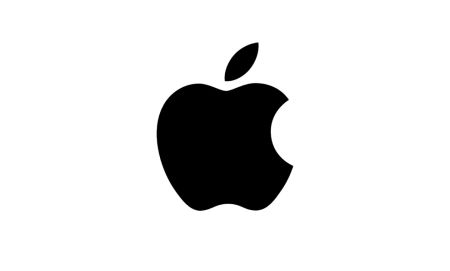The Best Prepaid Phones for Seniors in 2025
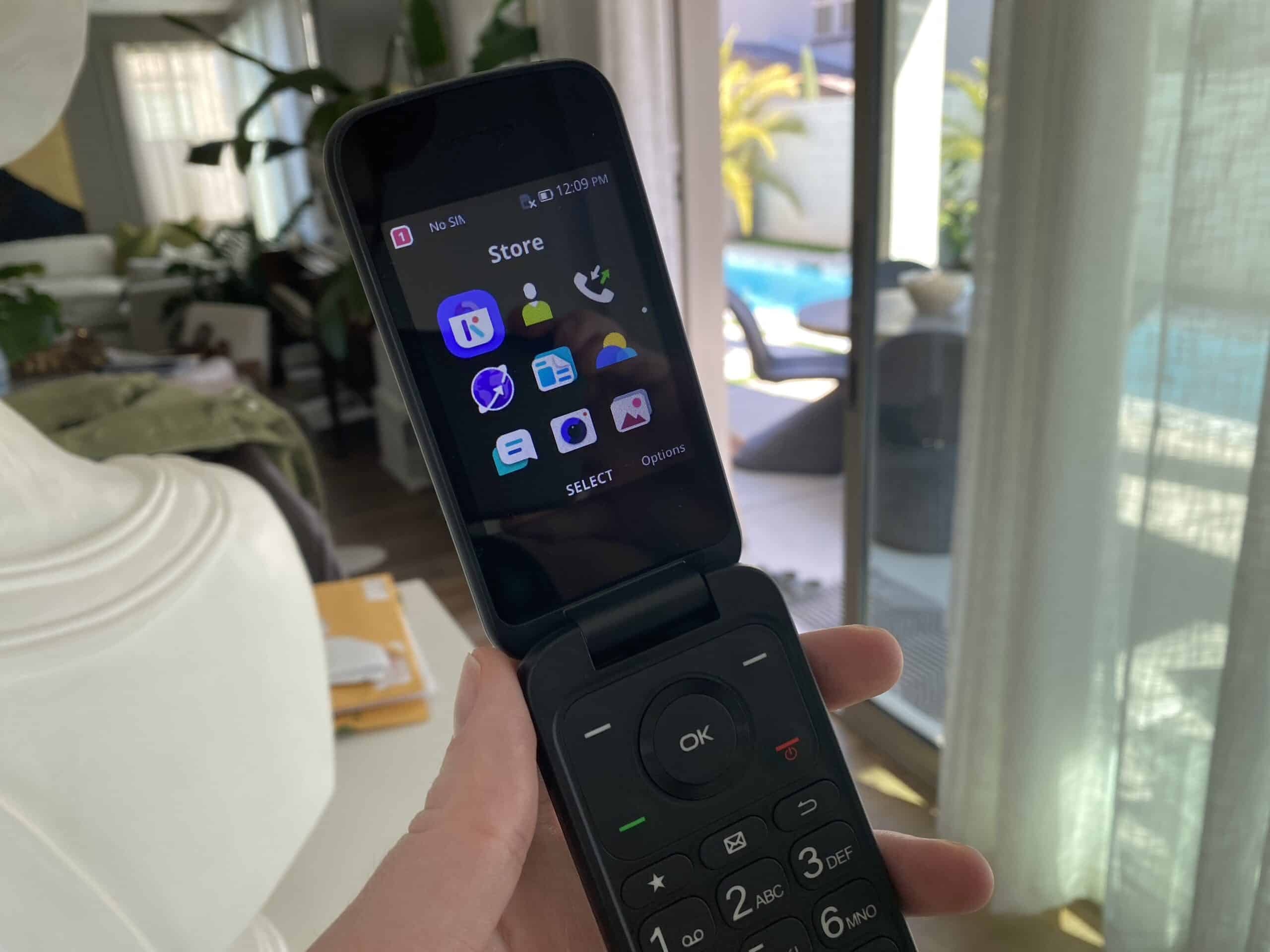
While prepaid phone plans often get a bad rap, they’re one of the most affordable ways to obtain cellular service. In addition to lower costs, prepaid plans also do away with overage charges, cancellation fees, and the dreaded long-term commitments of the major wireless carriers.
In this guide to the best prepaid phones for seniors, we’ll count down five of our favorite devices that are compatible with prepaid plans. If you’re looking to ditch the contracts and costs of postpaid cellular plans, then one of these affordable phones is sure to please.
Did you know that some postpaid plans can cost as low as $15 per month? Read our guide to the best senior phone plans to compare the most affordable cellular carriers for older adults.
How We Chose the Best Prepaid Phones for Seniors
These days, almost every cell phone is compatible with numerous prepaid and postpaid carriers. To choose our favorites, we used the following criteria:
- Cost: While modern smartphones can cost upwards of $1,000, we selected devices that cost as low as $70.
- Network compatibility: We looked for phones that were either compatible with specific affordable providers (like the Iris Flip) or compatible with a wide range of networks (like the iPhone SE).
- Device simplicity: First and foremost, we want to make sure these phones are easy to use, primarily for talking and texting.
- Minimal extra fees: We chose phones available on networks with minimal cancellation fees and overage charges.
Our Favorite Prepaid Phones for Seniors
- Jitterbug Flip2 : Best Overall
- Consumer Cellular Iris Flip : Most Affordable
- Apple iPhone SE : No Overage Charges
- Samsung Galaxy A13 5G : Cheapest Unlimited Data
- Iris Connect : Best for Hearing Aids
1. Jitterbug Flip2 - Best Overall
What We Like Most:
- $99.99 price tag
- Emergency alerts available
- Affordable unlimited data
- No long-term contracts or cancellation fees
Overview
Device cost: $99.99 when purchased from Lively
If you’re looking for an affordable phone with flexible monthly contracting, the Jitterbug Flip2 is the phone for you. It’s the only phone on this list to offer medical services for seniors, like an on-call nurse, emergency alerts sent to friends and family, and even a care advocate who can help you meet your health goals.
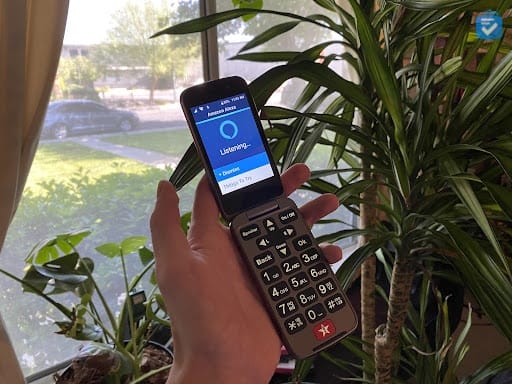
Features
Of the phones we tested for this article, the Flip2 is the only flip phone aside from the Iris Flip, which means it is super easy to use. It has those things you may remember as buttons, meaning you don’t have to type on a hard-to-read smartphone, ideal for people with vision issues. But just because it’s a flip phone doesn’t mean it was lacking in modern features. Take Alexa, for example, Amazon’s voice assistant. We used Alexa with the Flip2 to make calls for us, send and write text messages, and even check our battery level.
The last feature we want to point out is the dedicated “urgent response” button at the bottom of the keyboard — red with a white star and exclamation point. If we need help, all we have to do is push that button, which is much quicker than dialing 911. Lively, the company behind the Flip2, uses our phone’s location data to see where we are and send emergency responders or our family and friends — whatever we need. This phone is designed for seniors, keeping safety foremost in mind.
Prepaid Plans
With a Jitterbug plan, you can pay anywhere from $19.99 to $49.99 for unlimited talk and texting. There is no additional charge for data, which isn’t the case with other Lively products like the Jitterbug Smart4 or Smart3 smartphones. There are no long-term contracts or cancellation fees. Note that the plans below include a $5-per-month discount for enrolling in automatic and paperless billing, which we prefer, as it meant we didn’t have to remember to pay the bill each month. Since there is no high-speed data, there are no overage charges, and we didn’t pay an activation fee.
Technically, Lively is not a prepaid carrier; however, it requires no long-term contract, meaning you can cancel at any time without penalty.
Jitterbug Flip2 Plans
| Plan | Basic | Premium | Preferred |
|---|---|---|---|
| Monthly cost | $19.99 | $39.99 | $49.99 |
| Unlimited talk and text | Yes | Yes | Yes |
| Urgent response | No | Yes | Yes |
| Lively app | No | Yes | Yes |
| Nurse on call | No | No | Yes |
Drawbacks
Because the Flip2 is a flip phone and not a smartphone, it lacks some modern features, like video chatting, music and video streaming, and internet usage. Essentially, we used this phone just to make calls and texts, which may not be enough functionality for some people. If you want to use the internet on your phone, all of the other phones on this list allow for it.
Our Verdict
If you want a phone that lets you talk and text while protecting you medically in case of an emergency, there’s no better option than the Jitterbug Flip2. Even though its plans are not technically prepaid, they have many of the advantages of prepaid plans, like no long-term contract and low prices.
To learn more about this phone, read our full Jitterbug Flip2 review.
Pros
- Simple design
- Affordable plans
- Optional safety features
- Alexa voice commands
Cons
- No video calls
- No app support
2. Consumer Cellular Iris Flip - Most Affordable
What We Like Most:
- $69 device
- Up to 48 hours of talk time
- Hearing aid compatible
- Plans start at $20 per month
Overview
Device cost: $69 when purchased from Consumer Cellular
If affordability is top of mind, you’ll love the price tag on the Iris Flip. The flip phone costs $69, or only $2 per month if you finance for 24 months, and data plans start at only $20 per month.
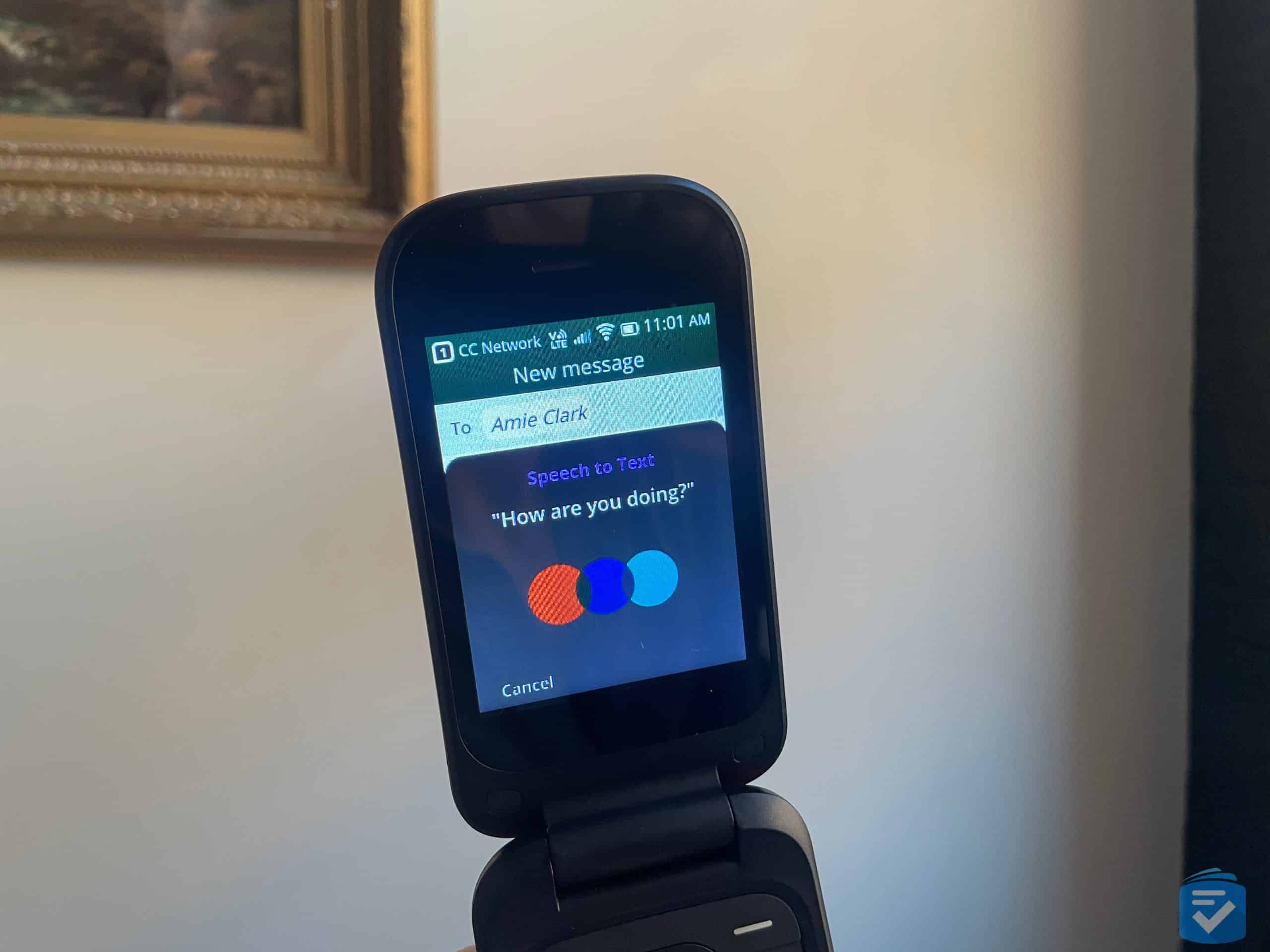
Features
Like the Jitterbug Flip2, the Iris Flip had a simple design that was completely intuitive for us to use. As a regular flip phone, it has that physical keyboard that makes it much easier to send calls and texts, with large buttons ideal for someone with visual impairment. But what the Iris Flip has that the Flip2 lacks are apps and internet access, just like a smartphone. We loved using it to check our email and surf the web in waiting rooms. Plus, like the Flip2, the Iris Flip allowed us to command it with our voice. Without touching the keyboard, we told the Iris Flip to open apps. We also used it to dictate texts, which is much easier than typing on that old-school T9 keyboard.
Prepaid Plans
The Iris Flip is available from Consumer Cellular, which uses the AT&T network. Per month, you can expect to pay $20 to $50 for 1 GB of unlimited data. These prices are a lot less than AT&T’s typical plans, which start at $50 per month and go all the way up to $85. All plans include unlimited talk and text. Plus, there’s a 5 percent discount for AARP members, bringing prices down to $19 per month. Paperless billing and automatic payments are included in all plans along with mobile hotspots and 5G access, the fastest speeds around.
>>Read more: Consumer Cellular Plans for Seniors
One major difference between the Flip2 and the Iris Flip is overage charges. With the Iris Flip, if you go over your monthly data cap, you’ll be upgraded automatically to the next tier of plan. While this does mean you’ll have to pay more, it circumvents the potentially costly issue of overage charges.
Iris Flip Plans
| Amount of data per month in GB | 1 | 5 | 10 | Unlimited |
|---|---|---|---|---|
| Cost per month | $20 | $25 | $35 | $50 |
| Unlimited talk/text | Yes | Yes | Yes | Yes |
| 5G access | Yes | Yes | Yes | Yes |
| Discounts | Yes | Yes | Yes | Yes |
| Nationwide coverage | Yes | Yes | Yes | Yes |
Drawbacks
If you want to use your phone to take high-quality photos, the Iris Flip probably isn’t the best option. It lacks a front-facing camera — i.e., a “selfie” camera — and its rear-facing camera is grainy and washed out at best. If you want a high-quality camera, we’d recommend the iPhone SE, the Iris Connect, or the Samsung Galaxy A13 5G.
Our Verdict
Despite its subpar camera, the Iris Flip gave us the best of both worlds: smartphone capabilities for a flip phone price.
To learn more about this phone, read our full Iris Flip review.
Pros
- Highly affordable
- Google Assistant capabilities
- Dedicated speakerphone button
- Classic, intuitive design
Cons
- No selfie camera
- Limited app support
3. Apple iPhone SE - No Overage Charges
What We Like Most:
- No overage charges
- 5G network
- Top-tier plan includes cloud storage and Max subscription (with ads)
- Text magnifying and other accessibility features
Overview
Device cost: $379.99 when purchased from Cricket Wireless
If you want a high-quality phone with multiple cameras, Siri, and video chat, the iPhone SE is a higher-end option. Plus, if you get it through Cricket Wireless, you can avoid overage charges completely while still getting some of the perks of a postpaid plan, like streaming through Max.
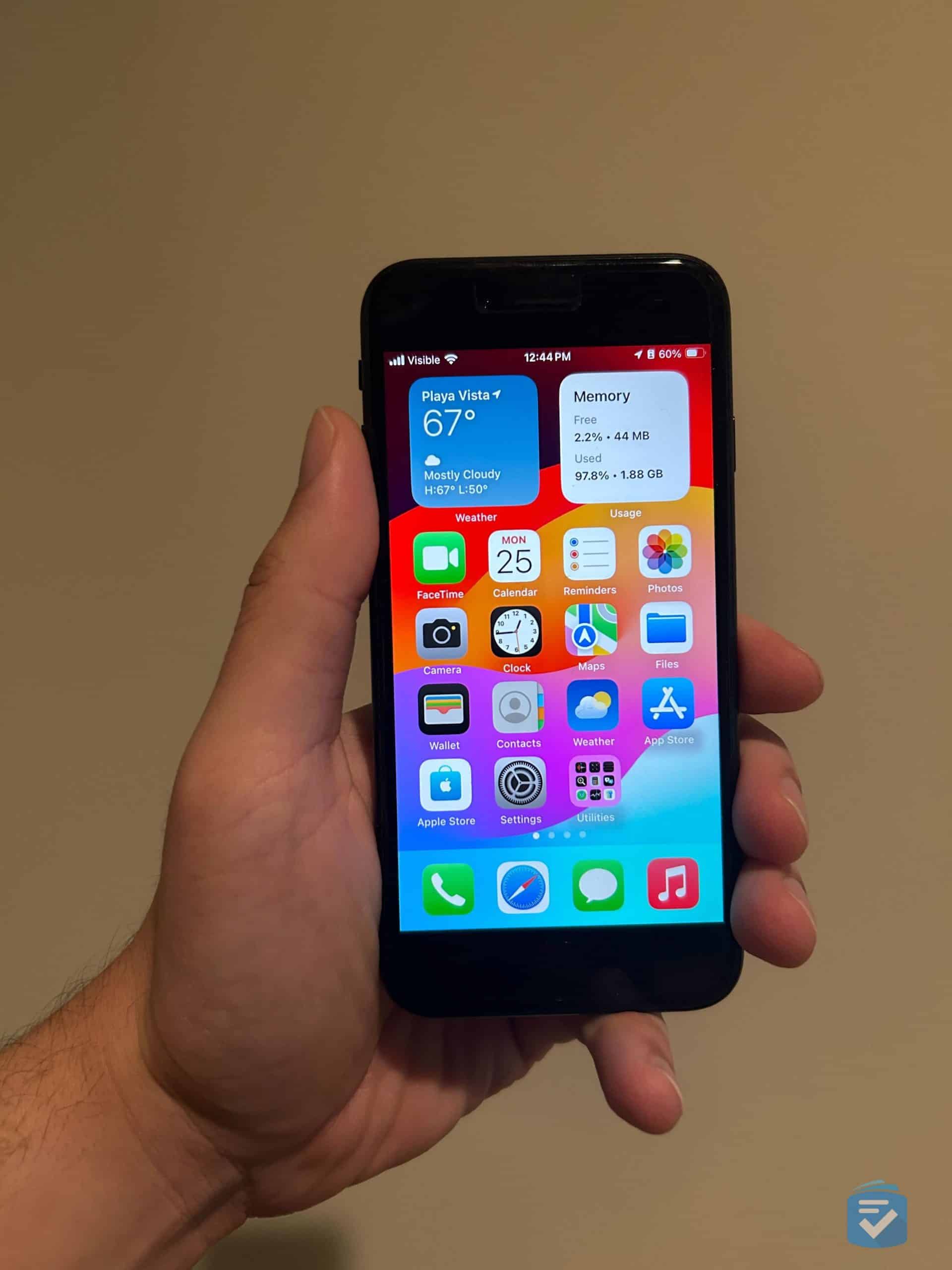
>>Read more: Cricket Wireless Senior Plans
Features
The iPhone SE from Apple has endless apps, which we missed with a flip phone like the Jitterbug Flip2. From streaming music on Spotify to listening to podcasts on Apple Podcasts to checking our banking app multiple times each day — like that’ll make the balance go up — there are millions of apps available on the App Store.
We also enjoyed using Siri to command our phone without having to press a button. For getting the weather or asking Siri questions, this voice assistant is useful for someone with a visual impairment. Finally, the SE has a 12 MP main camera, which means high-quality photos with portrait lighting, making even simple snapshots look professional.
Prepaid Plans
We could’ve used the iPhone SE with AT&T, T-Mobile, Total by Verizon, Boost Mobile, Straight Talk, among others, but we chose (and recommend) Cricket Wireless. We paid for the service at the beginning of the month, not the end like with the previous two phones. Prices start at $30 per month, and all plans include unlimited talk and text. The top-tier plan also includes a mobile hotspot, meaning you can use your data to connect other devices to the internet, as well as a few other perks:
- Subscription to Max with ads
- 150 GB of cloud storage
- International calls to Mexico and Canada, unlimited texting from the U.S. to 37 countries
Because Cricket Wireless is prepaid, there were no overage charges. If we went over our monthly data cap, our service was cut off. Note that we paid no activation fee because we bought the iPhone SE online, but if you buy it in a store, you’ll have to pay $25 to activate it. There is also a $5-per-month discount for enrolling in automatic payments, although this option isn’t available with the 5-GB-per-month plan.
iPhone SE Plans With Cricket
| Amount of data per month in GB | 5 | 10 | Unlimited | Unlimited with 15 GB mobile hotspot |
|---|---|---|---|---|
| Cost per month | $30 | $40 | $55 | $60 |
| Unlimited talk/text | Yes | Yes | Yes | Yes |
| 5G access | Yes | Yes | Yes | Yes |
| Discounts | None | $5 off with autopay | $5 off with autopay | $5 off with autopay |
| Nationwide coverage | Yes | Yes | Yes | Yes |
Drawbacks
Currently priced at $379.99, the iPhone SE is by far the most expensive phone on this list. Apple products tend to come with high costs, as they’re packed with features and are super easy to use. If budget is top of mind, we recommend avoiding Apple products unless they’re refurbished, which brings costs down slightly.
Our Verdict
Although the iPhone SE is pricey, using it with Cricket Wireless will keep your monthly costs low, and there’s no way you’ll have to pay more than what you paid at the beginning of the month. While other phones may be cheaper, you may end up paying more for them in terms of overage charges, activation charges, and cancellation fees.
To learn more about this phone, read our guide to the best iPhones for seniors.
Pros
- Great camera quality
- Endless app possibilities
- Solid battery life
- Affordable data plans through Cricket
Cons
- Higher costs
- Somewhat steep learning curve
4. Samsung Galaxy A13 5G - Cheapest Unlimited Data
 View Packages
Links to Mint Mobile
View Packages
Links to Mint Mobile
What We Like Most:
- 6.5-inch display
- Unlimited data starting at $15 per month
- No overage charges
- Compatible with M3/T3 hearing aids

Overview
Device cost: $169 when purchased from Mint Mobile
With the Samsung Galaxy A13 5G, you’ll get all of the features you want from a smartphone, like a large screen, 64 GB of memory, and Google Play, with an incredibly affordable prepaid plan. Mint Mobile plans start at $15 per month, and there are no overage charges whatsoever.
Features
The Samsung Galaxy A13 5G is most similar to the iPhone SE, but instead of being part of the Apple ecosystem, it’s part of the Android ecosystem. That means that we had all of the apps from Google Play, which is as expansive as the App Store. And since we organize our entire lives with Google’s apps, like Gmail, Google Calendar, and Google Docs, it was easy to find everything we needed straight from the Samsung Galaxy A13 5G.
Being designed by one of the largest companies on this list, the Samsung Galaxy A13 5G worked smoothly, with no glitches or slow download speeds. Finally, the cameras were of great quality, with a 5 MP selfie camera, and in the back, three cameras: one 50 MP, one 2 MP for wider shots, and one 2 MP for depth. We were amazed at how good our photos looked on the Samsung Galaxy A13 5G, and we’re not even good at photography!
Prepaid Plans
Although the Samsung Galaxy A13 5G works with T-Mobile, Ultra Mobile, Assurance Wireless, TracFone, and Total by Verizon, among other providers, we chose Mint Mobile because it has the lowest prices on the market. We paid at the beginning of the month for our phone service: only $15 with a three-month commitment for 5G of data, or only $30 for unlimited data. But if you buy the phone itself from Mint Mobile and get a six-month plan, the first six months of service are free. You can’t get any cheaper than that!
Although Mint Mobile’s plans are prepaid, if you go over your limit, service won’t end, unlike Cricket Wireless. Rather, the company will just give you slower data, and there’s the ability to upgrade. There’s also no activation fee and a seven-day money-back guarantee, minus the cost of shipping. However, the company doesn’t give refunds beyond this period, so there’s no way to get rid of any unused data. Once you buy it, it’s yours for the keeping!
To learn more about these plans, read our guide to Mint Mobile senior plans.
Mint Mobile Plans
| Amount of data per month in GB | 5 | 15 | 20 | Unlimited |
|---|---|---|---|---|
| Cost per month | 3 months: $15
6 months: $20 12 months: $15 |
3 months: $20
6 months: $25 12 months: 20 |
3 months: $25
6 months: $35 12 months: $25 |
3 months: $30
6 months: $35 12 months: $30 |
| Unlimited talk/text | Yes | Yes | Yes | Yes |
| 5G access | Yes | Yes | Yes | Yes |
| Discounts | 6 months of free service with a phone purchase | 6 months of free service with a phone purchase | 6 months of free service with a phone purchase | 6 months of free service with a phone purchase |
| Nationwide coverage | Yes | Yes | Yes | Yes |
Drawbacks
People with arthritis may want a phone that works with a wireless charging dock, like the Jitterbug Flip2. Unfortunately, this isn’t an option with the Samsung Galaxy A13 5G. Additionally, while it’s not quite as pricey as the iPhone SE, it’s the second-most-expensive phone on this list, costing $169 from Mint Mobile. If you want a more affordable smartphone, keep reading about the Iris Connect, which costs $89.
Our Verdict
With the breadth of Google Play, professional-grade cameras, and up to 38 hours of talk time, the Samsung Galaxy A13 5G is at the top of the market in terms of features. Mint Mobile is a great prepaid provider for this phone, offering six months of service for free with a phone purchase.
Pros
- Stellar cameras
- Google Play store compatibility
- Google Assistant voice commands
- Alexa voice commands
Cons
- Potentially complicated design
- No wireless charging
5. Iris Connect - Best for Hearing Aids
What We Like Most:
- Compatible with M3/T3 hearing aids
- $89 smartphone
- 25-hour battery life
- 13 MP camera
Overview
Device cost: $89 when purchased from Consumer Cellular
If you’re one of the 14 percent of U.S. adults age 50 and older with hearing loss, you may need a phone that works with your hearing aids. The Iris Connect is a smartphone compatible with M3/T3 hearing aids, and it costs only $89.
>Read more: Consumer Cellular Review
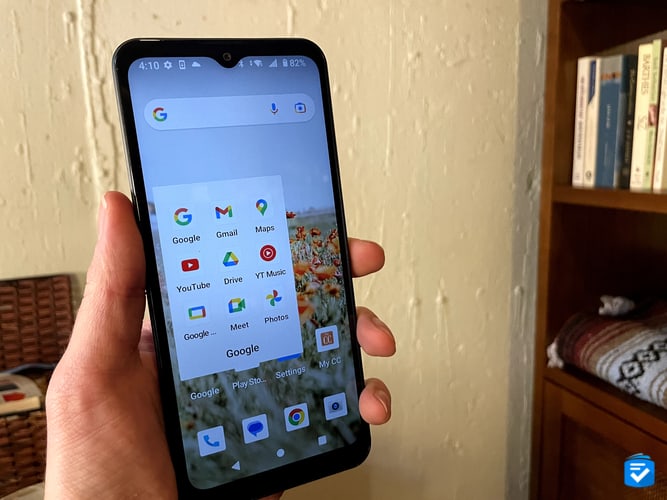
Features
Aside from its compatibility with hearing aids, we love that the Iris Connect uses the Android 13 operating system, meaning we had access to Google Play, just like we did with the Samsung Galaxy A13 5G. From getting directions from Google Maps as we drove to giving commands to Google Assistant, the Android version of Siri, this phone gave us the features we love with a smaller price tag. But it still had a smooth performance, displaying our most frequently used apps on the home screen so we could navigate with little friction. Plus, we love how the home screen has the Google search bar at the top, because when are we not Googling something?
Overview
Prepaid Plans
The Iris Connect, like the Iris Flip, uses Consumer Cellular, which, again, is not technically a prepaid plan. That means we paid at the end of the month, not the beginning, and that there were overage charges in the form of an upgrade. Say we signed up for 1 GB of data per month for $20 and ended up using 3 GB instead. Automatically, Consumer Cellular would upgrade us to the next level, which is 5 GB for $25. It’s not terrible, but it’s something to keep in mind if you are trying to stick to a strict monthly budget.
However, all of Consumer Cellular’s plans are monthly, so there are no cancellation fees, and we didn’t pay a fee to activate the Iris Connect, either. Note that Consumer Cellular bills paperlessly and automatically, so there’s no additional discount. However, if you’re one of AARP’s 38 million members, you can save 5 percent monthly.
Iris Connect Plans
| Amount of data per month in GB | 1 | 5 | 10 | Unlimited |
|---|---|---|---|---|
| Cost per month | $20 | $25 | $35 | $50 |
| Unlimited talk/text | Yes | Yes | Yes | Yes |
| 5G access | Yes | Yes | Yes | Yes |
| Discounts | Yes | Yes | Yes | Yes |
| Nationwide coverage | Yes | Yes | Yes | Yes |
Drawbacks
Since Consumer Cellular is only monthly, not prepaid, you may end up paying more than you initially bargained for if you go over your monthly data limit. What’s more, since all billing is automatic and electronic, you may not even realize you’re paying more for cell service until you’ve already been charged. To avoid this, we recommend turning on usage alerts so you can get emailed and texted when you’ve reached 50 and 75 percent of your monthly data.
Our Verdict
With hearing aid compatibility and an $89 price tag, the Iris Connect is an affordable Android phone with low monthly fees from Consumer Cellular.
To learn more about this phone, read our full Iris Connect review.
Pros
- Highly affordable for a smartphone
- Front and rear-facing cameras
- Google Assistant voice commands
- Long battery life
Cons
- Less powerful cameras
Prepaid vs. Postpaid Cellular Service
In recent years, with the prevalence of “unlimited” plans, the lines have blurred somewhat between prepaid and postpaid cellular plans. However, there is one primary difference, and this is how you are billed. Prepaid plans are paid upfront, while postpaid plans are billed on a recurring monthly basis.
With a prepaid cell phone plan, a person pays upfront for an allotment of talk minutes, text messages, and data usage. For example, a hypothetical prepaid carrier might charge a person $20 for 500 minutes of talk, 500 text messages, and 5GB of data. With this plan, once a person spends 500 minutes talking on the phone, their service will be cut off, and they’ll have to pay to renew their service.
With a postpaid plan, a person pays a flat monthly rate that covers an allotment of talk, text, and data; however, this allotment automatically renews each month when a person pays their monthly recurring bill. Depending on the cellular carrier, a person might be locked into making these monthly payments for up to two years.
The primary benefit of prepaid plans is lower prices. Overall, prepaid plans can end up costing $20 less per month than postpaid plans. Another benefit of prepaid plans is the flexibility, as you won’t be locked into a contract. They’re also more flexible in terms of the service. You can choose exactly how much talk, text, and data you want so you pay only for what you actually need. Although they lack the bells and whistles of postpaid plans, prepaid plans are a great way to shave a little off from your bottom line.
How Do Prepaid Phones Work?
Prepaid phones are phones that you pay for at the beginning of the month instead of the end. However, we must admit that the term “prepaid phone” is a bit of a misnomer, as most phones are compatible with a range of networks, some prepaid and some postpaid. Still, if you buy a phone with a prepaid plan, it means that you will get a finite amount of data each month. Beyond that, typically, your service will shut off, but there won’t be any overage charges. While prepaid phones tend to be cheaper than postpaid phones, you’ll also experience slower data. Plus, prepaid phones don’t usually have perks like streaming subscriptions or device upgrades, although there are some exceptions, like Cricket Wireless. If budget is your primary concern, however, getting a prepaid phone is a great way to save money.
Where Can You Buy Prepaid Cell Phones?
You can buy prepaid cell phones both in stores and online from the following brands:
- AT&T Prepaid
- Boost Mobile
- Cricket Wireless
- Google Fi Wireless
- Lively
- Mint Mobile
- Simple Mobile
- Ting
- Total by Verizon
- Tracfone
- Ultra Mobile
- Verizon Prepaid
While some networks offer physical cards that you need to reload your service, the card may be digital if you buy the phone online. Stores that sell prepaid phones include large retailers like Best Buy, Walmart, and Target.
Is Prepaid Better Than Postpaid?
Which is better: prepaid or postpaid? The answer depends on what you’re looking for. You should get a prepaid phone if you want:
- Affordability
- Flexibility
- No contracts
- No credit checks
- No hidden fees
- No overage charges
However, you’ll have to accept the fact that your data will be throttled, that you may have to pay more upfront for devices, and that you won’t get the perks of postpaid plans like additional subscriptions or upgrades.
On the other hand, you should get a postpaid phone if you want:
- Family plans
- Faster data
- Financing options so you can pay for your phone over time
- Higher data allowances
- Priority customer support
But with prepaid plans, you have to accept that the monthly costs are higher, you’ll typically have to enter a contractual agreement, the company will most likely check your credit, and you may incur additional fees.
Bottom Line
Although you may not get extras like a Walmart+ or Netflix subscription, and although high-speed data might be throttled, prepaid plans are a great way to save money if you’re using your phone only for talk and text. Avoid overage and cancellation fees by going with a flexible, prepaid plan.



